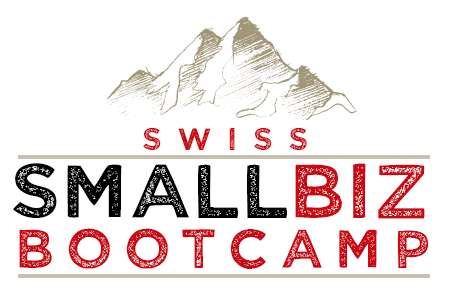Module C: INCORPORATING
Too legit to quit!All about making your small biz street legal.
Next Workshop: TBA
Time TBA
Location TBA
The Tools
Templates, checklists and worksheets included in this module
✓ Legal entities overview
✓ Company formation checklists
✓ Commercial registration template
✓ Swiss social insurance overview
✓ Insurance registration walkthrough
✓ Online tool index



INCORPORATING Lesson Plan
Part 1: Company Founding & Registration
I Choosing a legal form
Anyone who wants to start a business in Switzerland must choose a legal form. But not every legal form is the right fit for the budding entrepreneur. So, in part one of this module, we’ll look at the structures and entities to choose from and their advantages and disadvantages and what it takes to get them going.
I a) Person & Partnership Based Companies
These structures include the Sole Proprietorship as well as the Simple and General Partnership. These company types are typically easy, fast and cheap to set up, with the Sole Proprietorship being the most frequently chosen legal entity in Switzerland. As Sole Proprietorship is considered on a par with becoming self employed, there are certain restrictions for non-Swiss founders. We’ll look at the in and outs of person and partnership based legal forms.
I b) Capital Based Entities
In this section of the module we’ll look at the profiles of the two most popular capital based companies: The Limited Liability Company and the Public Limited Company. Capital based companies require a minimum capital, but on the other hand liability is limited by the shares in the company.
II Founding Process
Depending on the legal entity of your choice, the founding process varies a great deal. In this section we’ll look at the different steps you need to take to go from idea to officially incorporating your business in Switzerland, as well as the costs incurred along the way.
III Commercial Registration
Registration with the official Swiss Trade Register or Commercial Registry is compulsory for some, but not all, company types in Switzerland. In this section we will get an idea about the registration process, costs and time involved as well as the documents that need to be filed.
IV Converting legal entities
Having chosen a legal entity does not mean the company’s structure is set in stone. In this section of the module we’ll find out which structures can be converted and how this is done.
V Formation Tools & Services
With so many new companies being founded every month, there are a number of services and service providers that will greatly facilitate the registration process. We’ll examine both free and paid services, many of which (but not all) are available in English, such as the official SuisseID and StartBiz portals from the State Secretariat for Economic Affairs (SECO).

Part 2: Insurances Registration
VI Mandatory & Optional Insurances for SME
Any new business has to conclude various insurance policies. Which insurances are mandatory and which ones optional depends on the chosen legal form. In this part of the module we’ll look at the two types of insurance: the social insurance for the entrepreneur and any potential employees and the business insurances for the company and its assets.
VII Social Insurance: The Swiss three pillar system
The Swiss pension system is fairly substantial and is structured in three parts: the state pension (first pillar), the occupational benefits insurance (second pillar) and and optional private pensions (third pillar). In this part of the module we’ll get an overview of the system and its benefits.
VIII First pillar: State pension
The so-called First Pillar comprises the pension for old-age and surviving dependents’ insurance as well as disability Insurance and, compensation for loss of earned income (e.g. unemployment, maternity leave and during military service).
Registration for a First Pillar insurance is mandatory for any entrepreneur, who must register not only themselves but any employee as well. In this part of the module we will look at the sign up process and forms, which vary depending on your chosen legal entity.
VIX Second pillar: Occupational pension
The Second Pillar insurance is based on the laws on occupational pension provision (BVG) and accident insurance (UVG). Any employee of a capital based company with an annual salary of more than CHF 21,150* will have to be insured by a Second Pillar pension fund. However, the Second Pillar is mandatory for self-employed people with a Sole Proprietorship company. We’ll look into different providers of this type of insurance and how to sign up employees.
*Annual salary entry level valid in 2017
XV Third pillar: Private pension
The Third Pillar in the Swiss social security system is the responsibility of any individual to ensure a standard of living at their retirement or to ensure financial security for their family in case of their death. As often the first two pillars only partially achieve their objective, the state supports private pension provision and offers partial tax advantages. We’ll touch on the most important aspects of the Third Pillar in this part of the module.
XVI Business Insurances
In the case of business insurance, companies are more free than in the case of social insurance. In principle, a company can decide for itself which risks it wants to cover. By the end of the Insurance part, you’ll learn about the most common types of business insurances including
- Public Liability
- Property Insurance
- Business Interruption Insurance
- Machinery and Computer Insurance
- Insurance Against Health Risks

1 Module
Early Bird Rate- Individual price for one live workshop including worksheets and refreshements.
2 Modules
Early Bird Rate- Package price for two modules bundle (morning or afternoon) including worksheets and refreshments.
4 modules
Early Bird Rate- Package price for full day 4 module workshop, including worksheets and refreshments. Excluding lunch.
